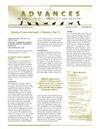Phenotypic Resistance of Staphylococcus aureus to Antibiotics in Dogs of Tamale Metropolis, Ghana
Q4 Veterinary
引用次数: 0
Abstract
Introduction: Staphylococcus aureus is an important bacterium which induces a wide range of diseases. Its presence in dogs and resistance to antibiotics is a threat to public health due to the close association of humans with dogs. The objective of the present study was to determine the phenotypic resistance of Staphylococcus aureus (S. aureus) to antibiotics in dogs without any clinical manifestation of diseases in Tamale Metropolis, Ghana. The current study also examined microbial load in these dogs. Materials and methods: A total of 120 samples from various parts of dogs, including the mouth, nose, anus, inner ear, and outer ear, were examined. Isolation and antibiotic resistance of S. aureus were determined using the USA Bacteriological Analytical Manual and the Disc Diffusion method, respectively. Results: The presence of S. aureus in the dogs ranged from 8.3% (anus) to 58.3% (nose), averaging 40%. The microbial load also ranged from 2.9 log cfu/cm2 (mouth) to 3.4 log cfu/cm2 (outer ear) with an average of 3.2 log cfu/cm2. There were significant differences among the examined samples regarding the presence of S. aureus, but not the microbial load. The overall resistance, intermediate resistance, and susceptibility of S. aureus were 46.2%, 12.9%, and 42.2%, respectively. The S. aureus was highly resistant to teicoplanin (88.0%) and susceptible to chloramphenicol (72.0%). The multiple antibiotic indexes ranged from 0 to 0.9, and 89.1% of the isolates exhibited multidrug resistance. Conclusion: The findings of the current study revealed that healthy dogs in Tamale Metropolis, Ghana, were carriers of S. aureus as well as other bacteria, and the S. aureus exhibited different resistance patterns to antibiotics.加纳塔马利大都会犬金黄色葡萄球菌对抗生素的表型耐药
简介:金黄色葡萄球菌是引起多种疾病的重要细菌。由于人类与狗的密切联系,它在狗身上的存在和对抗生素的耐药性对公众健康构成威胁。本研究的目的是确定加纳Tamale大都会无任何临床疾病表现的狗的金黄色葡萄球菌(金黄色葡萄球菌)对抗生素的表型抗性。目前的研究还检查了这些狗的微生物负荷。材料与方法:选取犬口、鼻、肛门、内耳、外耳等各部位共120份标本进行检测。金黄色葡萄球菌的分离和耐药性分别采用美国细菌学分析手册和纸片扩散法进行测定。结果:犬中金黄色葡萄球菌的检出率为8.3%(肛门)~ 58.3%(鼻子),平均为40%。微生物负荷也从2.9 log cfu/cm2(口腔)到3.4 log cfu/cm2(外耳)不等,平均为3.2 log cfu/cm2。在检查的样品中,金黄色葡萄球菌的存在有显著差异,但微生物负荷没有显著差异。金黄色葡萄球菌的总耐药率为46.2%,中间耐药率为12.9%,敏感率为42.2%。金黄色葡萄球菌对替柯planin高度耐药(88.0%),对氯霉素敏感(72.0%)。多重耐药指数在0 ~ 0.9之间,89.1%的菌株表现出多重耐药。结论:本研究结果表明,加纳Tamale Metropolis的健康犬是金黄色葡萄球菌和其他细菌的携带者,金黄色葡萄球菌对抗生素表现出不同的耐药模式。
本文章由计算机程序翻译,如有差异,请以英文原文为准。
求助全文
约1分钟内获得全文
求助全文
来源期刊

Advances in Small Animal Medicine and Surgery
Veterinary-Small Animals
自引率
0.00%
发文量
0
期刊介绍:
Each month, Advances in Small Animal Medicine and Surgery features abstracts of material from recent publications and presentations, followed by comments from specialists in the field. Small animal veterinarians and veterinary technicians gain new insight into specific topics and increase their skills in judging how to apply new tests and treatments in practice situations.
 求助内容:
求助内容: 应助结果提醒方式:
应助结果提醒方式:


